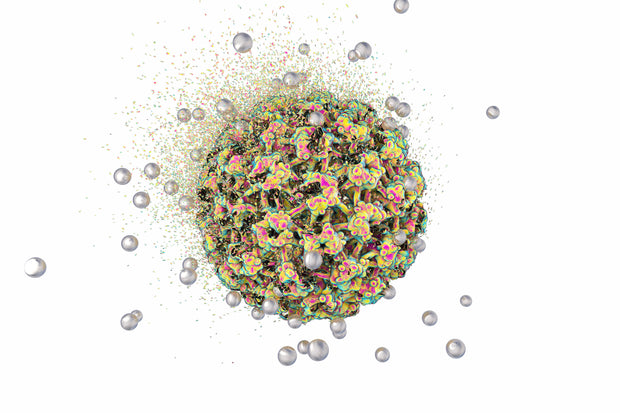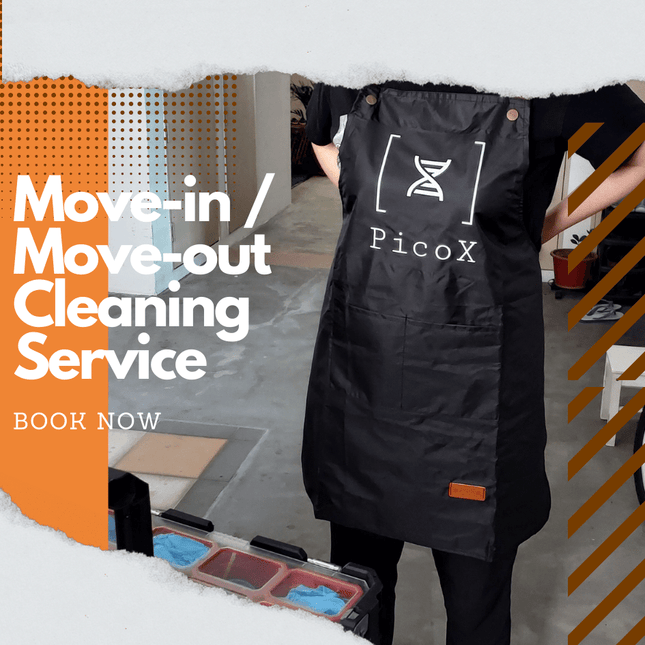The modern world is full of amazing discoveries and innovations. With technology, the human race keeps on improving and improvising new things. There are many varieties of coatings available, which can be used to cover a plethora of surfaces. One example is antimicrobial coatings, which are truly a gift of science. These coatings are made of compound materials that have numerous beneficial qualities. Yes, they affect the appearance of the surface. But in addition, these coatings also play a significant role in protection and prevention. Antimicrobial coatings are used widely to protect surfaces and humans too. Get to know all the details with this guide of antimicrobial coatings, from the materials used, to benefits and risks.
What is an Antimicrobial Coating?
Antimicrobial coatings use chemicals to hinder the growth of pathogens through cellular membrane perturbation. In layman terms, an antimicrobial coating is an application of a chemical agent on a surface that can stop the growth of disease-causing micro-organisms. Apart from increasing the surface’s durability, appearance, corrosion resistance, etc., these coatings also protect from harmful disease-causing microbes.
What is the Need of Antimicrobial Coatings?
As revealed by the European Center for Disease Prevention and Control, more than 4 million people acquire a Healthcare-Associated Infection (HCAI) each year, which results in 37,000 deaths. Combatting HCAIs is a significant problem for the healthcare sector around the globe. HCAIs are the sixth leading cause of death in western countries. In developing countries the situation is worse.
There is an increase in the need to protect surfaces from germs and microbes. This is not only true for healthcare devices/surfaces. The need is more widespread. From surfaces, equipment and walls, to textiles and food, everything is susceptible to microbes, which ultimately find their way to human beings. It is not possible to always clean, disinfect or use strong chemicals on surfaces to prevent the growth of germs. In this scenario, antimicrobial coatings seem to be the best option. It is a simple process of coating the surface with antimicrobial agents, leading to a more secure and long-term solution.
How Are Antimicrobial Surfaces Made?
Obtaining a surface that can hinder the growth of microbes can be attained through two methods. The first method is a physical modification, which comprises material alteration and surface roughness. The second method involves chemical change. Chemical changes include grafting of polymers, superhydrophobic surfaces, use of nanomaterials and coatings. These coatings include self-cleaning coatings and coatings with antimicrobial additives. The safety level, industry norms and the specific use of the coated object are kept in mind when choosing the most suitable antimicrobial coating.
What Materials Are Used in Antimicrobial Coatings?
- Graphene materials: Graphene materials consist of antimicrobial materials like fullerenes, graphite, graphene oxides, pristine graphene sheets and graphite oxides. These materials can impact the growth of microbes due to their disrupting the bacterial membrane, oxidative stress, and entrapment of micro-organisms.
- Graphene-like two-dimensional materials: Here, raw and chemically exfoliated MoS2 sheets are used as graphene-like, two-dimensional materials owing to their anti-bacterial activities.
- Polycationic hydrogel: Polycationic hydrogel consists of an antimicrobial hydrogel that is based on dimethyl-decyl ammonium chitosan-graft-poly(ethylene glycol)methacrylate poly(ethylene glycol)diacrylate. The material is believed to cause microbial death.
- Silver nanoparticles: Silver nanoparticles have a bactericidal effect within a 1-10 nm range and are size-dependent.
- Polymer brushes: There are three types of polymer brushes that are used in antimicrobial coatings: functionalized polymer brushes, brushes comprising bactericidal polymers and non-fouling polymer brushes.
- Dendrimers: Dendrimers are used in antimicrobial coatings due to their ability to traverse the cellular membrane.
- Copper and its alloys: Copper, as well as its alloys like bronze, brass, copper-nickel-zinc and cupronickel, are known to be natural antimicrobial elements. These elements can inhibit the growth of and destroy disease-causing micro-organisms.
How Are Antimicrobial Coatings Tested?
There is no specific test mentioned by the antimicrobial sector as a single test to prove the efficacy of antimicrobial coating. However, several test methods have been developed by different organizations to meet industry standards. Some of these tests are coined by the American Society for Testing and Materials (ASTM), American Association of Textile Chemists and Colorists (AATCC), Japanese Industrial Standard (JIS), and International Organization for Standardization (ISO). The tests help gauge the performance of an antimicrobial coating in combatting the growth and survival of microbes.
These tests are designed for specific fields of use, material or antimicrobial technology. As a result, it is difficult to choose one method. However, an example of standards is ISO 22196 (JIS Z 2001) for antibacterial coating by manufacturers. Antifungal test methods are ASTM G21 or AATCC Method 30, Part III. Similarly, ASTM E2149 is used to detect antimicrobial activity after one hour exposure, and ASTM E2180 is used to detect the antimicrobial activity after 24 hours of exposure on textiles. Also, ASTM G21 is used to determine resistance against black mold and fungus.
Where Are Antimicrobial Coatings Used?
Today, antimicrobial surface coatings find use in several consumer and industrial applications, apart from the healthcare sector, such as:
- Industrial
- Commercial
- Building products
- Outdoors
- Housewares
An essential requirement of antimicrobial coatings is in the medical field. All healthcare facilities face the risk of HCAIs. Antimicrobial coatings help to reduce the spread of germs through common areas like switches, doorknobs, etc. Further, the coatings are used on catheters, surgical devices, medical electronics, medical instruments, trays, etc., to minimize the risk of infection during medical procedures. They are now even used for hospital fabrics, including gloves, surgical masks, wound dressing, bandages, woven hospital textiles and non-woven hospital textiles. Innovation in the field has led to the use of these coatings in medical implants too.
Antimicrobial coatings are useful for a variety of buildings like schools, office buildings, restaurants, public venues and residential buildings for long-term protection from disease-causing microbes. They are also used vastly in maintaining the indoor air quality in air handling systems, like ventilation, heating, air-conditioning, ceilings and fans. The coatings are effective in combating mold growth and regrowth on various surfaces like automotive components, walls, ceiling pipes, etc.
Antimicrobial coatings have made their way into the food sector as well, finding use in food processing units, dairy, large-scale production, as well as in the utensils and containers used in the process. In the textile sector, they help provide durability, freshness and stain resistance to fabrics.
What Are the Benefits of Antimicrobial Coatings?
As mentioned earlier, there is a widespread growth in the use of antimicrobial coatings for not only the industrial and healthcare sectors where they are most needed, but also for domestic use. Following are some of the benefits of these coatings.
Protection Against Microbes
First and foremost, these surface coatings protect against the growth of various microbes like bacteria, fungi, algae, mold, etc. Research has shown that the application of these coatings on surfaces inhibits the growth of different microorganisms. A surface becomes an unfavorable environment for microbes to grow and survive as long as the coating is applied to it. It also leads to preventing staining, the presence of any bad odor, or degradation of the applied surface.
Fewer Disinfectants Needed
The use of antimicrobial coatings on surfaces reduces the need for harsh cleaning agents and disinfectants required to deal with stubborn microbes in public facilities. This gradually leads to a reduction in the environmental impact of using these cleaning agents in buildings, especially medical facilities.
Health and Cleanliness
Consider the case of an office, school or hospital where there are a large number of people. There is a high probability of the spread of infections in such places. The presence of an antimicrobial coating on surfaces helps to combat the spread of these infections or diseases to a large extent. The coatings protect the high-volume trace points like doorknobs, switches, railings and furniture. Further, they contribute to cleanliness by decreasing the presence of bacteria and germs in the air.
Cost-Effective
Antimicrobial coatings help reduce maintenance costs. When the coating is applied on a surface, it prevents staining, discoloration, leeching or other factors that affect the look of the object. It saves the extra financial burden and labor that would have been required for the upkeep or replacement of these objects.
Increased Lifespan
Protection from microbes coupled with the maintenance provided by antimicrobial coatings increases the general lifespan of objects, as they are protected against discoloration, odor and other damage caused by microbial activity.
Infrastructure Value
The application of antimicrobial coatings not only protects surfaces but also contributes to the infrastructure standard as a whole. The existence of these coatings enables organizations to provide a safer and cleaner environment for the people in it. The use of these coatings on surfaces carries a more profound message that organizations do care about the safety and atmosphere that they provide to people. It certainly adds to the value of the building and its overall infrastructure.
-

Clean by Nature
All natural cleaning solution, safe for everyone at home and eco-friendly




